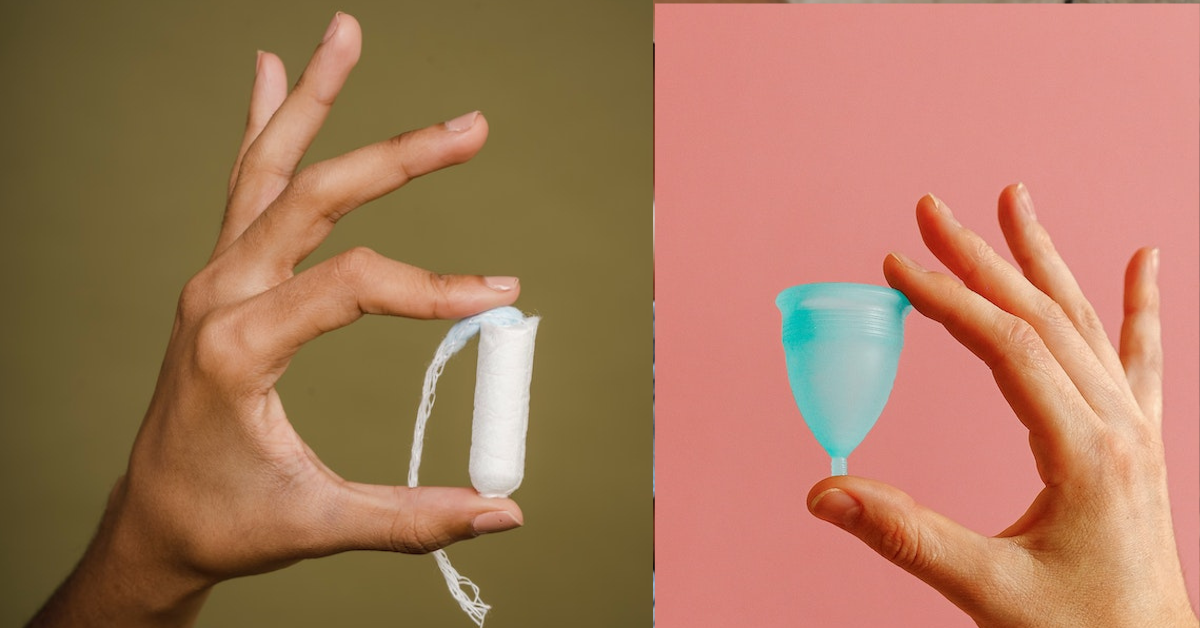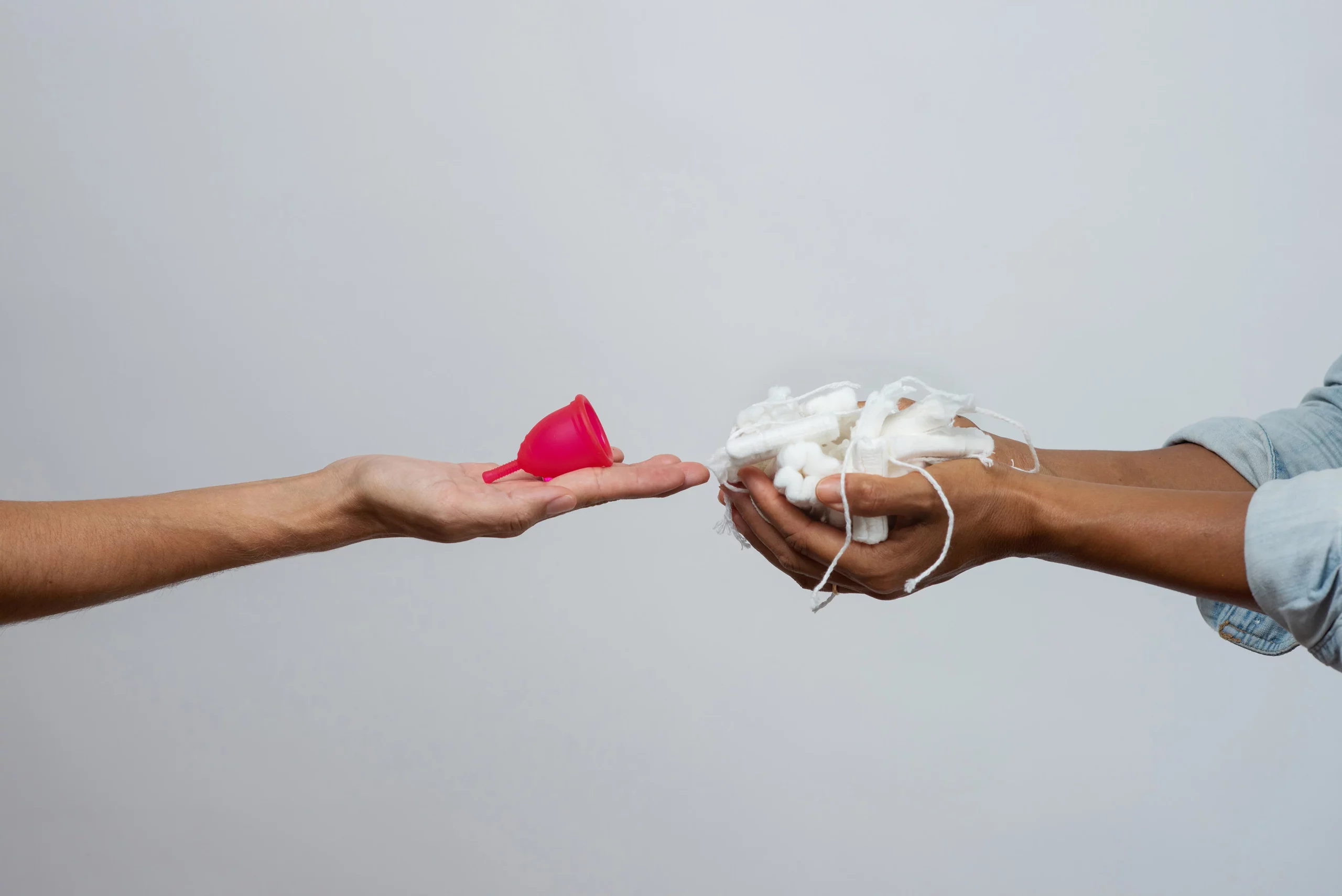Are you tired of the limitations and discomfort that come with traditional period products? If so, you may be considering making the switch to menstrual cups. These innovative and hygienic alternatives to tampons have been gaining popularity in recent years. But are menstrual cups really better than tampons? In this article, we will explore the benefits and drawbacks of both options, so you can make an informed decision about which one is right for you. Whether you’re concerned about sustainability, comfort, or overall convenience, we’ve got you covered. Let’s dive in and discover the world of menstrual cups and tampons.
Contents
- 1 Are Menstrual Cups Better than Tampons?
- 2 Health Benefits of Menstrual Cups
- 3 Health Risks of Tampons
- 4 Comfort and Convenience Compared
- 5 Environmental Impact of Menstrual Cups and Tampons
- 6 Menstrual Cups vs Tampons Cost Comparison
- 7 Tampons vs Menstrual Cups: Which One is Best for You?
- 8 Frequently Asked Questions
Are Menstrual Cups Better than Tampons?

When it comes to choosing between menstrual cups and tampons, there is no one-size-fits-all answer. The decision ultimately depends on your personal preferences, lifestyle, and flow. However, it’s worth exploring the benefits and drawbacks of both options to make an informed choice.
Comfort: Tampons offer a level of comfort and discretion that is hard to beat. They are smaller in size compared to pads, making them easier to carry around and more discreet to wear. Unlike pads, tampons are not easily visible under clothing and do not give the sensation of wearing a diaper. For swimmers, tampons may be a better option as they do not inflate when in contact with water, unlike pads.
Hygiene: Menstrual cups and tampons come with their own considerations for vaginal hygiene. While tampons are worn internally and do not disturb the inner vaginal environment, menstrual cups can also be a hygienic choice if used correctly. It is crucial to follow the usage instructions and regularly replace and clean both options to minimize the risk of infections.
Sustainability: One of the significant advantages of menstrual cups is their sustainability. Made from soft, medical-grade silicone, these reusable cups are an eco-friendly alternative to disposable tampons. By opting for a cup, you can significantly reduce the amount of waste generated each month and save money in the long run.
It’s important to note that there may be a learning curve when using menstrual cups. Adjusting to inserting and removing the cup can take some practice. However, with patience and familiarization, many people find that cups are just as easy to use as tampons.
The choice between menstrual cups and tampons ultimately comes down to personal preference. Consider factors such as comfort, hygiene, and sustainability when making your decision. Whether you choose the convenience of tampons or the eco-friendly option of menstrual cups, both can effectively manage your period.
Health Benefits of Menstrual Cups

Are Menstrual Cups Safer Than Tampons?
When it comes to your health, menstrual cups offer several advantages over tampons. Here’s why:
- Reduced Risk of Toxic Shock Syndrome (TSS): Unlike tampons, menstrual cups do not increase the risk of TSS. TSS is a rare but serious condition caused by the growth of bacteria and production of toxins in the vaginal area. Menstrual cups collect menstrual flow rather than absorbing it, reducing the risk of bacterial growth.
- No Drying Effect: Tampons can absorb not only menstrual blood but also the natural moisture in your vagina, which can cause dryness and discomfort. Menstrual cups, on the other hand, do not interfere with the natural moisture balance, keeping your vagina hydrated and reducing the risk of irritation.
- No Risk of Fibers Left Behind: Tampons can sometimes leave behind fibers in the vaginal canal, which can cause irritation or infection. Menstrual cups are made of smooth, medical-grade silicone, reducing the risk of fibers being left behind.
- Gentle on Sensitive Skin: Menstrual cups are made of soft, flexible silicone that is gentle on sensitive skin. Unlike tampons that can cause chafing or irritation, menstrual cups provide a comfortable and irritation-free experience.
- Less Disruption of Vaginal pH: Tampons can disrupt the natural pH balance of the vagina, leading to an increased risk of infections. Menstrual cups, being non-absorbent, do not interfere with the pH balance, helping to maintain a healthy vaginal environment.
Remember, while menstrual cups offer these health benefits, it is important to practice good hygiene by emptying and cleaning your cup regularly. Additionally, if you have any underlying health conditions or concerns, it is always best to consult with your healthcare provider before trying a new period product.
Next, let’s explore the environmental benefits of menstrual cups.
Health Risks of Tampons

When it comes to period products, it’s essential to consider the potential health risks associated with each option. While tampons are widely used and convenient, it’s important to be aware of some of the potential drawbacks.
One of the primary concerns with tampons is the risk of toxic shock syndrome (TSS). TSS is a rare but serious condition that can occur when certain bacteria, such as Staphylococcus aureus, produce toxins. These toxins can enter the bloodstream through micro-tears in the vaginal wall, which can happen when using tampons. While the risk of TSS is low, it’s crucial to follow the recommended guidelines for tampon use, such as changing them regularly and using the lowest absorbency necessary.
Another consideration is the drying effect of tampons. Tampons absorb not only menstrual blood but also natural vaginal moisture. This can lead to dryness and discomfort, particularly for individuals with sensitive skin. It’s important to be mindful of your body’s needs and consider alternative options if you experience dryness or irritation.
Additionally, tampons can sometimes leave behind fibers in the vaginal canal. These fibers can increase the risk of infection and irritation. It’s essential to use tampons with a smooth, non-fibrous surface and to change them regularly to minimize this risk.
Lastly, tampons can potentially disrupt the natural pH balance of the vagina. The vagina has a delicate balance of bacteria and acidity that helps protect against infections. Using tampons can sometimes alter this balance, leading to an increased risk of bacterial overgrowth or yeast infections. If you’re prone to these types of infections, it may be worth considering alternative period products.
While tampons are a popular choice for many individuals, it’s crucial to be aware of these potential health risks. Remember to practice good hygiene, follow the recommended guidelines for tampon use, and consult with a healthcare provider if you have any concerns or questions.
Comfort and Convenience Compared
Longer Wear Time
One of the key advantages of menstrual cups over tampons is their longer wear time. While tampons typically need to be changed every 4-8 hours, depending on the flow, menstrual cups can be worn for up to 12 hours without needing to be emptied or replaced. This means less hassle and fewer trips to the bathroom throughout the day, giving you more freedom and peace of mind.
Less Odor
Another benefit of menstrual cups is that they can help reduce odor during your period. Unlike tampons, which can sometimes contribute to an unpleasant smell due to bacteria growth, menstrual cups are made of medical-grade silicone that is non-porous and doesn’t retain odor. This can help you feel more confident and comfortable, especially during those days when you’re on the go or in close quarters with others.
Easy to Use and Carry
When it comes to ease of use and portability, menstrual cups have a clear advantage. Once you become familiar with how to insert and remove them properly, it becomes a simple and quick process. Unlike tampons, there are no strings hanging out, which can be uncomfortable or get in the way. Menstrual cups are also more discreet to carry around, as they come in a small, compact size that can easily fit in your purse or pocket. This makes them a convenient option for travel, work, or any other daily activities.
With their longer wear time, ability to reduce odor, and ease of use and portability, menstrual cups offer a comfortable and convenient alternative to traditional tampons. However, it’s important to note that personal preferences and individual needs may vary. It’s always a good idea to consult with your healthcare provider before making any changes to your menstrual routine.
Environmental Impact of Menstrual Cups and Tampons
One Menstrual Cup is Equal to How Many Pads?
When considering the environmental impact of period products, it’s important to compare the usage and waste generated by menstrual cups and tampons. A single menstrual cup can be used for up to 10 years, while the average person uses around 11,000 tampons throughout their lifetime.
To put it into perspective, one menstrual cup can replace hundreds of disposable pads and tampons. This means that by using a menstrual cup, you can significantly reduce the amount of waste that goes into landfills.
In addition, the production and disposal of tampons contribute to environmental issues. Tampons are typically made from a combination of cotton and synthetic fibers, which require significant amounts of water and energy to produce. On the other hand, menstrual cups are usually made from medical-grade silicone, which is a durable and eco-friendly material.
By choosing to use a menstrual cup, you are not only reducing the amount of waste generated, but also minimizing your carbon footprint. It’s a small change that can have a big impact on the environment.
The Importance of Sustainable Period Products
In recent years, there has been a growing movement towards sustainability and reducing plastic waste. This has extended to period products, with more people seeking out eco-friendly alternatives to traditional disposable options.
Menstrual cups are a great sustainable choice for several reasons. Firstly, as mentioned earlier, they can be reused for many years, reducing the need for single-use products. This not only saves money in the long run but also helps to minimize the environmental impact.
Secondly, menstrual cups are made from materials that are less harmful to the environment compared to the production and disposal of tampons. The silicone used in menstrual cups is non-toxic and does not contribute to pollution or waste.
Lastly, the manufacturing process of menstrual cups has a lower carbon footprint compared to tampons. The production of tampons requires the cultivation of cotton, which often involves the use of pesticides and other chemicals. In contrast, the production of silicone menstrual cups has a lower environmental impact.
By choosing to use menstrual cups, you are making a conscious decision to support sustainability and reduce your ecological footprint.
Making a Positive Impact
When it comes to the environmental impact of menstrual cups and tampons, it’s clear that menstrual cups have a significant advantage. They are a sustainable and eco-friendly option that can replace hundreds of disposable pads and tam
Menstrual Cups vs Tampons Cost Comparison
Initial Cost
When considering the cost of period products, it’s important to take into account the initial investment. Menstrual cups typically have a higher upfront cost compared to tampons. On average, a menstrual cup can range from $20 to $40, depending on the brand and material. Conversely, a box of tampons usually costs around $5 to $10, depending on the quantity and brand.
While the initial cost of a menstrual cup may seem higher, it’s essential to consider the long-term savings that come with it. A single menstrual cup can last for several years, with proper care and maintenance. This means that you won’t need to purchase tampons or pads every month, resulting in significant savings over time.
Long-term Cost
When it comes to long-term cost, menstrual cups have a clear advantage over tampons. As mentioned earlier, a menstrual cup can be reused for several years. This not only saves you money but also reduces the amount of waste generated from disposable tampons.
On the other hand, tampons are single-use items that need to be replaced every few hours. Over the course of a year, the cost of purchasing tampons can add up quickly. Additionally, the frequent disposal of tampons contributes to environmental pollution.
By choosing a menstrual cup, you can save money in the long run and reduce your environmental impact. It’s a cost-effective and eco-friendly option that offers both financial and sustainability benefits.
While the initial cost of a menstrual cup may be higher than that of tampons, the long-term savings make it a more economical choice. By investing in a menstrual cup, you not only save money but also contribute to reducing waste and protecting the environment.
Tampons vs Menstrual Cups: Which One is Best for You?

When it comes to choosing between tampons and menstrual cups, it ultimately depends on your personal preferences and needs. Both options have their own advantages and considerations to keep in mind. Here’s a breakdown to help you determine which one is best for you:
Comfort and Convenience
- Tampons are compact and discreet, making them easy to carry around in your purse or pocket. They are also available in a variety of sizes and absorbency levels, allowing you to find the perfect fit for your flow.
- Menstrual cups, on the other hand, are made from soft, medical-grade silicone that molds to your body for a comfortable fit. They can be worn for up to 12 hours, giving you longer protection without the need for frequent changes.
Hygiene and Health
- Both tampons and menstrual cups require good hygiene practices to prevent infection. It’s important to wash your hands before and after insertion/removal and to change tampons or empty menstrual cups regularly.
- Tampons carry a small risk of toxic shock syndrome (TSS), a rare but serious bacterial infection. It’s crucial to follow the recommended usage guidelines and avoid leaving tampons in for longer than the recommended time.
- Menstrual cups have a lower risk of TSS compared to tampons. They also do not cause the drying effect that tampons can have or leave behind fibers that may increase the risk of infection. Menstrual cups are gentler on sensitive skin and do not disrupt the natural pH balance of the vagina.
Environmental Impact and Cost
- Menstrual cups are a more sustainable and eco-friendly option compared to tampons. They are reusable and can last for several years with proper care, significantly reducing waste and your carbon footprint.
- While menstrual cups have a higher upfront cost, they offer significant long-term savings compared to continuously purchasing tampons. Investing in a menstrual cup can save you money in the long run and lessen the environmental impact of disposable period products.
Remember, the choice between tampons and menstrual cups is a personal one. Consider your comfort, convenience, hygiene, health, and environmental impact when making your decision. It’s always a good idea to consult with your healthcare provider if you have any concerns or questions about trying a new period product.
Frequently Asked Questions
Can a menstrual cup get stuck?
No, menstrual cups cannot get stuck inside you. They have only one entrance and exit, so if you’re having difficulty removing it, there are steps you can take to make it easier.
Are period cups safer than tampons?
Yes, menstrual cups are safe to use as long as you follow the recommended guidelines. There is no evidence to suggest that they are more dangerous than tampons. However, if you experience pain, urinary problems, or infection, it is advisable to stop using the cup and consult a healthcare professional.
Can I feel my menstrual cup when I walk?
Ideally, you should not be able to feel your menstrual cup when you walk. If you do feel it, it may be positioned incorrectly. Try removing and reinserting it to ensure proper placement.
Why do menstrual cups shorten periods?
The suction created by the cup’s negative pressure may increase the flow of menstrual blood, which could potentially reduce the length of your period.
How often should I empty my menstrual cup?
You can wear a menstrual cup for 6 to 12 hours, depending on your flow. This means you can use it overnight. Make sure to remove and empty your cup within the 12-hour mark to prevent leaks.
I am a medical student with experience and interest in Women’s health and well-being.